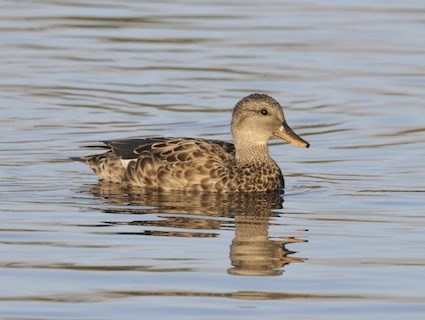
Gadwall breed mainly in prairie potholes—small ponds scattered throughout the Great Plains and Canadian prairies. Some also breed on tundra, deltas, and wetlands in boreal forests of the far north. In developed areas with few natural ponds, Gadwall may use stock ponds. They choose well-vegetated wetlands with plenty of emergent plants to feed among and take cover in.
Gadwall eat mostly submerged aquatic vegetation such as algae, grasses, rushes, sedges, pondweed, widgeon grass, and water milfoil, including leaves, stems, roots, and seeds. They also eat snails, midges, water beetles, and other invertebrates. During the breeding season, animal matter can account for nearly 50 percent of an adult Gadwall’s diet, but this proportion drops to only about 5 percent animal matter during winter.
Gadwall are dabbling ducks—they ride fairly high in the water and they tip forward to graze on submerged plants that they can reach with their outstretched necks. They rarely dive. Gadwall sometimes steal food from American Coots. Like most ducks they often form flocks, and you may see them fidgeting as they swim about each other. These movements are actually a complex series of displays that communicate pair bonds, levels of aggression, and degrees of interest among potential mates. For example, Gadwall may send warnings to each other off by lifting their chin or opening their bill at another bird. A male may seek a female’s attention by ruffling his head feathers, drawing the head close to the body, and then rearing up out of the water and pushing his head forward. Further courtship displays include the male arching his head over his back and then jerking forward while raising his tail and wing coverts; pushing his bill underwater and then quickly tossing water into the air while whistling; and rearing up while raking his bill through the water and whistling.
They are presently available as pinioned females only.